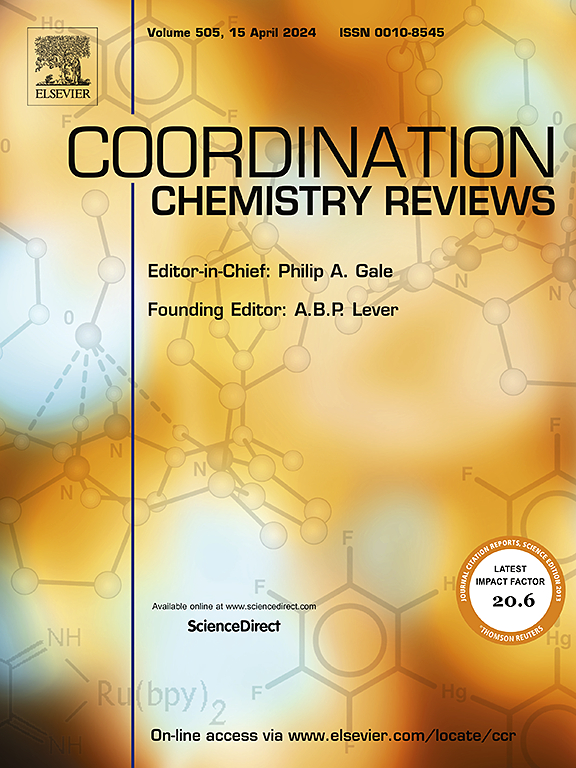金属有机框架在吸附捕获空气中气态芳香族挥发性有机化合物中的实际应用的最新进展
IF 23.5
1区 化学
Q1 CHEMISTRY, INORGANIC & NUCLEAR
引用次数: 0
摘要
金属有机骨架(mof)是一种在化学功能和形态(如孔径)方面具有高度可调性的多孔晶体材料。由于这些优越的性能,mof被认为是有效的吸附剂,可以吸附包括挥发性有机化合物(VOCs)在内的各种污染物。然而,由于mof的使用通常仅限于实验室台式小规模研究,其实际应用可能会遇到各种操作挑战(例如,流动收缩、湿度导致的性能损害、框架坍塌、二次污染、低可再生性、过高的前期成本和有限的可扩展性)。为了帮助克服这些问题,本文重点介绍了mof吸附剂的物理化学性能(相对于Calgon carbon生产的“黄金标准”BPL AC作为商业活性炭)的可扩展性,以及它们对非极性芳香族voc的性能评估(例如,在特定进口分压下的吸附分配系数[PC])。本文将对mof的合成、改性和功能化进行综述,以实现其在大型空气净化系统中的规模化应用。本文章由计算机程序翻译,如有差异,请以英文原文为准。

Recent advances in metal-organic frameworks for real-world application toward adsorptive capturing of gaseous aromatic volatile organic compounds in air
Metal-organic frameworks (MOFs) are porous crystalline materials with a high degree of tunability in terms of chemical functionality and morphology (e.g., pore size). Because of such advantageous properties, MOFs are recognized as effective adsorbents against diverse pollutants including volatile organic compounds (VOCs). However, as the use of MOFs has generally been confined to lab bench-top small-scale studies, their real-world applications can encounter various operational challenges (e.g., flow constriction, performance impairment due to humidity, framework collapse, secondary pollution, low regenerability, exorbitant upfront cost, and limited scalability). To help overcome these issues, this review focuses on the scalability of MOF-based adsorbent in relation to their physicochemical properties (relative to the “gold standard” BPL AC as a commercial activated carbon produced by Calgon Carbon) along with their performance evaluation toward nonpolar aromatic VOCs (e.g., the sorption partition coefficient [PC] at specific inlet partial pressure [for air purification <0.1 Pa]). This review is thus expected to offer a better understanding of the synthesis, modification, and functionalization of MOFs to realize their upscaled application for large-scale air purification systems.
求助全文
通过发布文献求助,成功后即可免费获取论文全文。
去求助
来源期刊

Coordination Chemistry Reviews
化学-无机化学与核化学
CiteScore
34.30
自引率
5.30%
发文量
457
审稿时长
54 days
期刊介绍:
Coordination Chemistry Reviews offers rapid publication of review articles on current and significant topics in coordination chemistry, encompassing organometallic, supramolecular, theoretical, and bioinorganic chemistry. It also covers catalysis, materials chemistry, and metal-organic frameworks from a coordination chemistry perspective. Reviews summarize recent developments or discuss specific techniques, welcoming contributions from both established and emerging researchers.
The journal releases special issues on timely subjects, including those featuring contributions from specific regions or conferences. Occasional full-length book articles are also featured. Additionally, special volumes cover annual reviews of main group chemistry, transition metal group chemistry, and organometallic chemistry. These comprehensive reviews are vital resources for those engaged in coordination chemistry, further establishing Coordination Chemistry Reviews as a hub for insightful surveys in inorganic and physical inorganic chemistry.
 求助内容:
求助内容: 应助结果提醒方式:
应助结果提醒方式:


